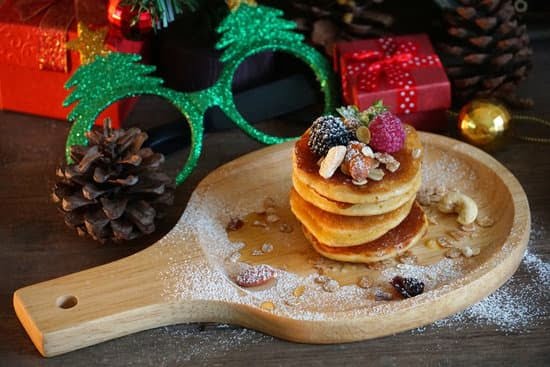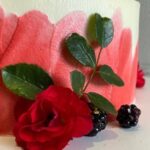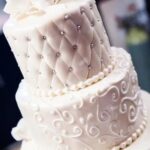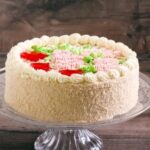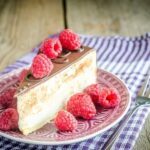Cake decoration is an art form that has the power to transform a simple dessert into a breathtaking masterpiece. From elegant piping designs to intricate fondant sculptures, there are countless techniques and styles to explore in the world of cake decoration. In this article, we will take you on a journey through the different types of cake decoration, uncovering the timeless appeal of traditional techniques, the versatility of fondant-based decorations, the lusciousness of buttercream styles, and so much more.
Cake decoration holds a special significance when it comes to making celebrations even more memorable. Whether it’s a birthday party, wedding reception, or any other special occasion, a beautifully decorated cake becomes the centerpiece that captivates both eyes and taste buds. Each brushstroke or carefully placed sugar flower adds an extra layer of joy and wonder to these festive moments.
In this enticing exploration of cake decoration, we will delve into various techniques and mediums. We will unveil the delicate icing aesthetics and intricate designs created through traditional piping techniques. We will dive into the world of fondant as a versatile medium for covering cakes and creating sculpted figurines.
We will also explore the lush finish and texture that buttercream brings to cake decoration. And that’s just scratching the surface. So get ready to be inspired as we embark on this delectable journey through the enchanting art of cake decoration.
Traditional Cake Decoration Techniques
When it comes to cake decoration, traditional techniques have a timeless appeal that continues to captivate and delight. From delicate icing aesthetics to intricate piping designs, traditional cake decoration techniques add a touch of elegance and sophistication to any occasion.
One of the most iconic elements of traditional cake decoration is piping. This technique involves using a pastry bag filled with frosting or icing to create intricate designs on the surface of the cake. Whether it’s creating delicate lace patterns, floral motifs, or personalized messages, piping allows for endless creativity and customization.
Another traditional cake decorating technique is delicate icing aesthetics. This technique involves applying smooth and even layers of icing onto the cake surface, resulting in a flawless finish. From simple buttercream to royal icing, this method requires precision and attention to detail to achieve stunning results.
| Technique | Description |
|---|---|
| Piping | A technique that involves using a pastry bag filled with frosting or icing to create intricate designs on the surface of the cake. |
| Icing Aesthetics | The art of applying smooth and even layers of icing onto the cake surface for a flawless finish. |
Traditional cake decoration techniques hold a special place in our hearts as they evoke feelings of nostalgia and time-honored traditions. They are perfect for weddings, birthdays, anniversaries, and other special occasions where elegance and refinement are desired. As trends come and go, these classic techniques continue to stand the test of time by adding beauty and sophistication to every slice of cake.
Fondant-Based Cake Decoration
Fondant is a versatile and popular medium for cake decoration. It is a dough-like mixture made from sugar, water, and other ingredients that are rolled out and used to cover cakes, create intricate designs, and make figurines. Fondant offers a smooth and flawless finish that can transform any cake into a work of art. In this section, we will delve into the world of fondant-based cake decoration and explore various techniques to elevate your cakes to new heights.
Covering Cakes with Fondant
One of the most common uses of fondant in cake decoration is covering the entire cake with it. Fondant allows for a seamless and polished look that is difficult to achieve with other icing options. To cover a cake with fondant, start by preparing your cake with a layer of buttercream or ganache as an adhesive for the fondant. Roll out the fondant into a thin sheet larger than the size of your cake.
Gently drape the fondant over the cake, smoothing it out with your hands or using a fondant smoother tool. Trim off any excess fondant and voila. You have a perfectly covered cake ready for further embellishment.
Creating Figurines and Sculpting Intricate Designs
Another exciting aspect of fondant-based cake decoration is the ability to sculpt intricate designs and create edible figurines. With fondant, you can bring your imagination to life and add personalized touches to your cakes. To create figurines, start by coloring your fondant using gel food coloring or edible dusts.
Knead the colored fondants until they are pliable and shapeable. Use various tools like toothpicks or silicone molds to mold different parts of the figurine such as faces, bodies, or accessories. Assemble all the pieces together using edible glue made from mixing water with tylose powder or gum paste glue.
Sculpting intricate designs with fondant requires patience and precision. Start by sketching your desired design on paper and use it as a guide. Roll out the fondant to an even thickness and cut it into the desired shape using sharp knives or cookie cutters.
To add dimension to your designs, you can use various techniques such as embossing, brushing on edible dusts, or adding texture with impression mats. Fondant allows for endless possibilities when it comes to creating intricate decorations that will surely impress your friends and family.
With fondant-based cake decoration, you can achieve professional-looking cakes that are both visually stunning and delicious. The versatility of fondant opens up a world of possibilities for cake decorators, whether it’s covering cakes with a smooth finish or sculpting intricate designs and figurines. Let your creativity run wild with fondant and watch as your cakes become extraordinary pieces of edible art.
Buttercream Decorating Styles
Buttercream is a popular choice for cake decoration due to its smooth texture and versatile nature. It can be easily piped, frosted, and used to create various textures, making it perfect for both simple and intricate designs. In this section, we will explore some of the most common buttercream decorating styles that can elevate any cake into a delectable work of art.
Piping Techniques
One of the most iconic buttercream decorating techniques is piping. Piping involves using a pastry bag with different tips to create decorative patterns on the cake’s surface. There are various piping techniques that can be used to achieve different effects. For example, the classic shell border technique creates a beautiful scalloped edge around the cake, while the rosette technique allows you to create stunning floral designs. Other popular piping techniques include dots, lines, stars, and ruffles.
Frosting and Smoothing
Another way to achieve a sleek and professional finish with buttercream is by frosting and smoothing the cake’s surface. This technique involves applying a layer of buttercream over the entire cake and using a spatula or bench scraper to smoothen out the surface. The result is a clean and polished look that serves as an excellent base for further decoration or simply adds an elegant touch on its own.
Creating Texture
Buttercream can also be used to add texture and dimension to a cake design. One popular technique is called “basket weave,” where vertical and horizontal lines are piped onto the cake in an overlapping pattern resembling woven baskets. Another technique involves using different textured combs or tools to create patterns like swirls, waves, or even wood grain effects on the buttercream.
Buttercream offers endless possibilities when it comes to cake decoration styles. Whether you prefer simple elegance or intricate details on your cakes, buttercream can help you achieve the desired look. With piping techniques, frosting and smoothing, and creating texture, you can create stunning designs that will surely impress your guests. So let your creativity run wild and explore the art of buttercream decorating to elevate your cakes to a whole new level.
Edible Image and Photo Cake Toppers
Edible image cake toppers have gained immense popularity as a convenient and customized solution for cake decoration. These toppers allow individuals to transform a simple cake into a personalized work of edible art. Edible images are made by printing high-quality images onto sheets of edible paper using food-grade ink. When placed on cakes, they seamlessly blend in with the frosting, creating a stunning visual effect.
One of the major advantages of edible image cake toppers is their versatility. They can be used for various occasions such as birthdays, weddings, anniversaries, or corporate events. Whether it’s a photo of a loved one, a company logo, or a favorite cartoon character, edible images can be printed in vibrant colors with exceptional detail.
To apply an edible image onto a cake, it is important to work on a smooth surface. A layer of buttercream or fondant should be applied evenly on the cake before carefully placing the image on top. The image easily adheres to the frosting without any additional steps required. High-quality edible images maintain their vividness and clarity even when refrigerated, ensuring that the final product looks as captivating as it did when first prepared.
| Advantages of Edible Image Cake Toppers | Examples of Occasions |
|---|---|
| Versatile and customized | Birthdays |
| High-quality print with vibrant colors | Weddings |
| Easy application on cakes | Anniversaries |
| Maintains vividness even when refrigerated | Corporate events |
With the convenience and visual impact that edible image cake toppers offer, it’s no wonder they have become a popular choice for both professional bakers and home decorators alike. They enable individuals to add a personal touch to their cakes, making them memorable and eye-catching. Whether used as the focal point of a cake or as a part of an overall design, edible images undoubtedly elevate the art of cake decoration.
3D Cake Sculpting and Carving
Cake sculpting and carving takes cake decoration to a whole new level of artistry. With the ability to transform a cake into stunning three-dimensional designs, this technique captivates both the eyes and taste buds. From realistic animal sculptures to iconic landmarks, the possibilities are truly endless.
Cake sculpting involves shaping and manipulating cake layers to create unique forms and structures. It requires precision, patience, and a keen eye for detail. Many talented cake artists start by carefully planning their design and sketching it out before they begin carving. This step ensures that the proportions are accurate and the final result is visually pleasing.
Once the carving is complete, the cake can be covered in fondant or buttercream to provide a smooth base for further decoration. The sculpture can then be brought to life through intricate details such as texturing, painting, or adding additional edible accents like flowers or accessories. It’s important to note that different types of cakes work better for sculpting due to their density and stability.
One of the most remarkable things about 3D cake sculpting is its ability to amaze guests at any celebration. Whether it’s a child’s birthday party or an elegant wedding, these intricately designed cakes become focal points that leave a lasting impression. It’s not just about creating something delicious; it’s about creating edible works of art that evoke wonder and spark joy.
Aspiring cake decorators who wish to venture into 3D sculpting should start with simpler designs before progressing to more complex ones. Practice is key in honing skills, so experimenting with different techniques and materials will help develop confidence in cake sculpting abilities. With patience, dedication, and a little bit of imagination, anyone can bring cake decoration into the realm of three-dimensional wonders.
Creative Cake Painting
Cake painting is a unique form of cake decoration that allows bakers to unleash their creativity and transform a simple cake into a work of art. This technique involves using edible paints and brushes to create stunning designs and patterns directly on the surface of the cake. From watercolor-style effects to brushstroke techniques, cake painting offers endless possibilities for creating visually striking and personalized cakes.
One popular technique in cake painting is the watercolor-style effect. This involves diluting edible paint with a small amount of alcohol or lemon extract to create a translucent effect on the cake. Bakers can then use various brushes to apply the paint in gentle strokes, blending different colors together to achieve a beautiful, ethereal look. The watercolor-style effect is perfect for creating dreamy landscapes, floral designs, or abstract patterns on cakes.
Another technique in cake painting is brushstroke painting. This involves using textured brushes to create bold strokes and textures on the cake’s surface. Bakers can experiment with different brushes and stroke techniques to achieve different effects, such as creating realistic fur textures for animal-themed cakes or adding texture to tree bark designs. Brushstroke painting adds depth and dimension to cakes, making them truly eye-catching.
Airbrushing is another popular cake painting technique that creates smooth gradients and vibrant colors on cakes. It involves using an airbrush tool to spray edible paint onto the surface of the cake, allowing bakers to quickly cover large areas with color or create intricate details with precision. Airbrushing is commonly used for creating gradient backgrounds, realistic shading, or achieving a flawless finish on fondant-covered cakes.
Cake painting opens up a world of creative possibilities for bakers who want to take their cake decoration skills to the next level. Whether it’s experimenting with different styles like watercolor or brushstroke techniques, or mastering airbrushing for seamless finishes, there are endless opportunities for bakers to showcase their artistic talents through cake painting. With practice and imagination, anyone can create edible masterpieces that will truly impress and delight.
Innovative Cake Decorating Tools and Gadgets
Cake decorating has come a long way with the introduction of innovative tools and gadgets that enhance cake decoration techniques. These specialized tools have revolutionized the way cakes are decorated, making it easier and more convenient for both amateur and professional cake decorators to create stunning designs. Here are some of the latest tools and gadgets that have taken the cake decorating world by storm:
- Cake Airbrushes: Cake airbrushes allow decorators to achieve smooth, professional-looking finishes on cakes. This tool uses compressed air to spray food coloring onto the cake, resulting in even coverage that is difficult to replicate by hand. With a wide range of colors available, decorators can create vibrant, gradient effects or intricate patterns with ease.
- Pattern Stencils: Pattern stencils are an excellent tool for adding detailed designs onto cakes. These stencils come in various shapes and patterns, allowing decorators to create intricate designs without having to freehand them. Simply lay the stencil on top of the cake, secure it in place, and sprinkle powdered sugar or cocoa powder over it. When the stencil is lifted off, a beautiful pattern is left behind.
- Fondant Molds: Fondant molds are essential for creating intricate shapes and figures using fondant or gum paste. These molds come in a wide variety of designs, from flowers and leaves to animals and letters. Decorators simply press their fondant or gum paste into the mold, remove any excess material, and then release the molded shape from the mold for application onto the cake.
These tools and gadgets have allowed cake decorators to elevate their creations to new heights by enabling them to work with precision and ease. Whether it’s achieving flawless finishes with an airbrush or adding intricate details with stencils and molds, these innovative tools have made cake decorating more accessible than ever before.
With these cutting-edge tools at their disposal, aspiring cake decorators can now bring their creative visions to life with greater confidence and precision. It’s an exciting time to be in the world of cake decoration, as these tools continue to push the boundaries of what can be achieved with cake design. So, whether you’re a beginner or a seasoned pro, don’t hesitate to explore the possibilities that these innovative cake decorating tools and gadgets can offer.
DIY Cake Decoration Tips and Tricks
Decorating a cake can be a fun and rewarding endeavor, but it can also be challenging, especially for those new to the craft. However, with the right tips and tricks, anyone can achieve professional-looking cake decoration right at home. Here are some valuable insights and expert advice to help you on your DIY cake decoration journey:
- Plan Ahead: Before you start decorating your cake, take some time to plan out your design. Consider the theme of the occasion or event, and gather inspiration from various sources such as magazines, websites, or social media. Sketch your design on paper and make a list of the materials and tools you will need.
- Level Your Cake: For a polished finish, it’s important to level your cake layers before decorating. Use a serrated knife or a cake leveler to trim off any uneven tops and create an even surface.
- Crumb Coat Technique: The crumb coat technique is essential in achieving smooth buttercream or fondant finishes. Apply a thin layer of frosting or ganache all over the cake to seal in any crumbs. Chill the cake in the refrigerator for about 15 minutes before applying the final layer of frosting.
- Piping Techniques: Piping is one of the most commonly used techniques in cake decoration. To achieve clean and precise lines, hold the piping bag at a 90-degree angle to the surface of the cake. Practice different piping tips to create various designs such as rosettes, shells, borders, and lettering.
- Fondant Application: If you’re working with fondant, dust your work surface with powdered sugar or cornstarch to prevent sticking. Roll out the fondant evenly using a rolling pin and drape it over the chilled crumb-coated cake. Smooth out any wrinkles or air bubbles using a fondant smoother.
- Color Mixing: Experimenting with colors is a great way to add visual interest to your cake. When mixing food coloring into icing or fondant, start with a small amount and gradually add more until you achieve the desired shade. Remember, it’s easier to darken a color than it is to lighten one.
With these DIY cake decoration tips and tricks, you’ll be well on your way to creating beautiful and professional-looking cakes right in your own kitchen. Don’t be afraid to experiment and let your creativity shine through. Happy decorating.
Conclusion
In conclusion, cake decoration is an art form that brings joy and beauty to any celebration. Throughout this article, we have explored various types of cake decoration techniques, from traditional styles to innovative methods. Each technique offers its own unique aesthetic and creative possibilities, allowing cake decorators to unleash their artistic talents.
Whether it’s the timeless appeal of classic cake decoration with intricate piping designs and delicate icing aesthetics, or the versatility of fondant as a medium for creating figurines and sculpting intricate designs, there is a wide range of options available to cake decorators. The smooth and luscious finish of buttercream frosting provides another avenue for creativity, with techniques like piping and creating texture adding depth and visual interest.
Additionally, the growing popularity of edible images as personalized cake decorations allows individuals to transform their cakes into customized works of art. From 3D cake sculpting and carving to the wonders of cake painting using various techniques like watercolor-style or airbrushing, the possibilities are endless when it comes to cake decoration.
Finally, we have discussed how innovative tools and gadgets have revolutionized the way cakes are decorated. From special tools like pattern stencils and fondant molds to the use of airbrushes for stunning effects, these advancements have made it easier than ever for aspiring cake decorators to achieve professional-looking results at home.
Frequently Asked Questions
What are the 5 kinds of cake decorating?
The five kinds of cake decorating are buttercream, fondant, royal icing, ganache, and whipped cream. Buttercream is a popular type of frosting that is made with butter and powdered sugar, and it can be piped onto cakes in various designs. Fondant is a smooth and pliable icing made from sugar and gelatin, which can be rolled out and draped over cakes for a sleek finish.
Royal icing is a stiff icing made from egg whites and powdered sugar that can be used for intricate piping work on cookies or cakes. Ganache is a glossy mixture of chocolate and cream that can be used to frost cakes or create drips on the edges. Whipped cream is airy and light, often used to fill layers or as a topping for cakes.
What is the decoration on cake called?
The decoration on a cake is commonly referred to as the cake decoration or simply the cake design. It encompasses all the elements added to a cake to enhance its appearance and make it more visually appealing.
This can include various techniques such as piping patterns with frosting, adding edible flowers or fruits, creating intricate sculptures or figurines with sugar paste, using stencils for designs, or even painting directly onto the cake surface with food coloring.
What are the 7 types of icing?
The seven types of icing are buttercream, royal icing, fondant (also known as rolled fondant), glaze icing (also known as drizzle icing), cream cheese frosting, ganache, and meringue-based frostings like Swiss meringue buttercream or Italian meringue buttercream. Buttercream is made by beating together butter and powdered sugar until creamy; it’s versatile and commonly used for frosting cakes. Royal icing consists of egg whites mixed with powdered sugar until thickened; it dries hard and is often used for intricate designs on cookies or gingerbread houses. Fondant is an elastic mixture made from powdered sugar mixed with gelatin that can be rolled out into sheets and draped over cakes.
Glaze icing is made by mixing powdered sugar with a liquid like water or lemon juice; it’s commonly used for drizzling over bundt cakes or pastries. Cream cheese frosting combines cream cheese, butter, and powdered sugar for a tangy and smooth topping. Ganache is created by pouring heated cream over chopped chocolate and combining until smooth; it can be used to frost cakes or create glossy drips. Meringue-based frostings are made by whisking egg whites with sugar until stiff peaks form, then incorporating butter for a light and creamy texture.

Welcome to our cake decorating blog! My name is Destiny Flores, and I am the proud owner of a cake decorating business named Cake Karma. Our mission is to provide delicious, beautiful cakes for all occasions. We specialize in creating custom cakes that are tailored specifically to each customer’s individual needs and tastes.

